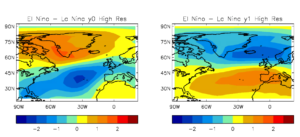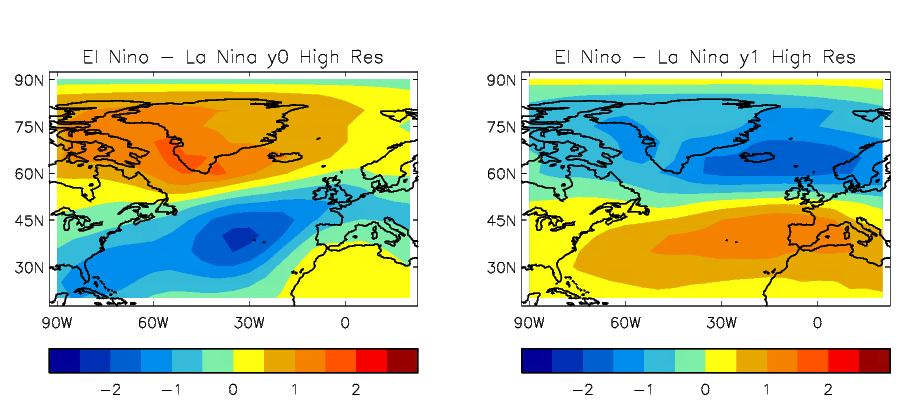Scientists at the Met Office have discovered that, away from the tropics, the El Niño-Southern Oscillation (ENSO) can influence Atlantic weather patterns a full year from the original event.
Their paper, named ENSO affects the North Atlantic Oscillation one year later, was published in Science and written by Adam A. Scaife, Nick Dunstone, Steven Hardiman, Sarah Ineson, Chaofan Li, Riyu Lu, Bo Pang, Albert Klein-Tank, Doug Smith, Annelize van Niekerk, James Renwick and Ned Williams.
Key findings from the ENSO research paper
The research showed this one-year lagged extratropical response to ENSO is as strong as the simultaneous response but with an opposite impact. For example, it has now been shown El Niño, which can increase the chance of colder winters in the UK, can result in a milder winter period the following year. While ENSO is just one of many drivers that influence the UK weather, it can be important, particularly in the winter months.
Adam Scaife, the report’s lead researcher and a professor at the Met Office, said, “This latest research reveals that El Niño is often followed by positive North Atlantic Oscillation (NAO) a whole year later, while La Niña is followed by negative NAO one year later. This has major implications for understanding ENSO, explaining our winter climate variability and interpreting long-range predictions.”

 Implications for winter predictions
Implications for winter predictions
Professor Rowan Sutton, director of the Met Office Hadley Centre, said, “This is exciting new research which reveals unexpected potential for valuable forecasts of UK and European winter weather over a year ahead. Such forecasts could be valuable for long-range risk and contingency planning, for example in the energy sector or in flood preparedness.”
The research showed that knowledge of the previous winter ENSO event is also important for understanding some of extreme winters. In cases in which El Niño is followed by La Niña, or vice versa, the lagged effects can boost expected impacts. For example, La Nina was followed by El Nino in 1968/69, 1976/77 and 2009/10, boosting the resulting cold weather, while we saw mild and stormy weather in the winters of 1988/89, 1998/99 and 2007/8 when El Nino was followed by La Nina.
ENSO shifts back and forth irregularly every two to seven years, bringing predictable shifts in ocean surface temperature and disrupting wind, rainfall and global temperature patterns across the tropics. With an increased understanding of the teleconnections and impacts of ENSO, scientists will be better able to plan for variations in winter weather patterns.
In related news, the UK Met Office recently developed guidance and tools to improve the prediction of life-threatening flash flooding. Click here to read the full story.



